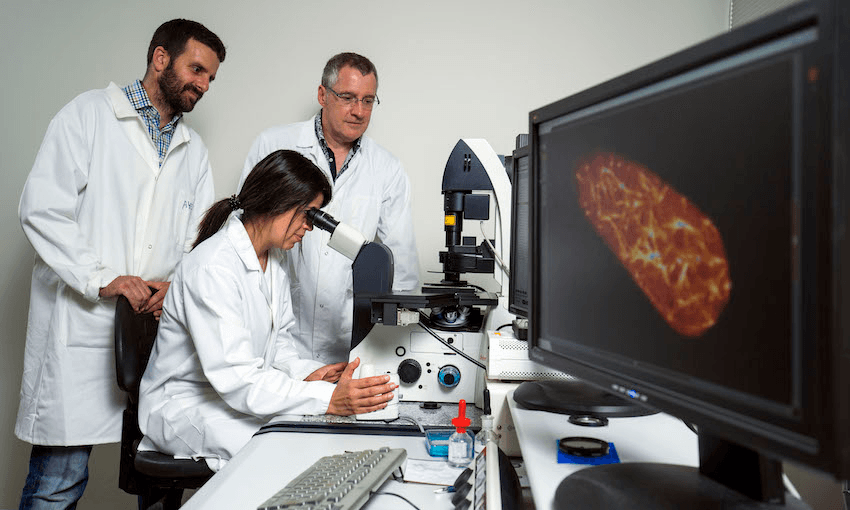Today the government announced a $13.75 million funding boost for research to combat the spread of kauri dieback and myrtle rust. Could microfluidics be the solutions we are looking for?
Here in New Zealand, our native trees are currently under threat from two pathogens – an oomycete (water mould) called Phytophthora agathidicida, which causes Kauri dieback, and Austropuccinia psidii, the fungus behind myrtle rust. Organisms like these are found in almost every ecological niche, but what sets these two apart is how they grow and spread.
The complex process is known as tip growth. Rather than extending from the root, like human hair does, in fungi and water moulds cells in their tips extend, and form strong, thread-like structures called hyphae. In some cases, hyphae can grow invasively, penetrating deep into the roots and leaves of other plants, on their search for food. This is why they’ve caused some of the most devastating extinctions of both flora and fauna throughout history.
Understanding how these hyphae generate force gives us an insight into the mechanics of pathogen growth, and is a key step towards eradicating them. This is the focus of research by MacDiarmid Institute principal investigator, Dr Volker Nock.
Working with his colleagues at the University of Canterbury, Volker has developed a novel lab-on-a-chip platform that can measure the protrusive forces that fungi hyphae exert as they grow. The device consists of a series of measurement channels – just tens of microns wide – which each contain a single, flexible micropillar, thinner than a human hair. As the hyphae of a specific fungus or oomycete grow out from the seeding area, the channels guide them towards the force-sensing pillars. Once a hypha tries to grow past the pillar, the bendy material flexes and deflects in a predictable way.
By monitoring the whole process with a standard optical or fluorescence microscope, Volker and his team can collect images of the pillar deflection as it happens. And feeding it into their modelling software lets them convert those deflections into force values.
Volker’s system was originally designed to investigate the locomotive forces of the most famous worm in science, C. elegans.
“Ashley Garrill from the UC School of Biological Science saw me present the work we’d done with nematode worms, and wondered if we could apply it to fungi”, he says. That led to a Marsden FastStart grant in 2015, launching not only their collaboration, but also a new area of research with real-world applications.
The collaborations keep growing. Volker is now part of a successful Endeavour Programme bid led by CRIs Landcare and AgResearch. He will apply his microfluidic system to testing the influence of various natural compounds on these damaging pathogenic fungi, in the hope of finding new ways to stop the hyphae filaments from penetrating the cells of our native trees. He’s also continuing his work with Associate Professor Ashley Garrill, and together they’re developing a related microfluidic platform that will study how fungi spores react to electric fields.
The threat from pathogenic fungi is a global one. As our climate changes, the zones in which we can grow our staple crops will move too, making them more susceptible to attack by these microorganisms. This is why Volker has big plans for extending the capabilities of his microfluidic lab-on-a-chip.
At the moment, the movement of the micropillars is detected optically. But in collaboration with MacDiarmid principal investigator, professor Jadranka Travas-Sejdic they’re using her conductive polymer pillars to electrically detect the force exerted by the hyphae.
“If it works, it will be so exciting, and could have a huge impact.”

